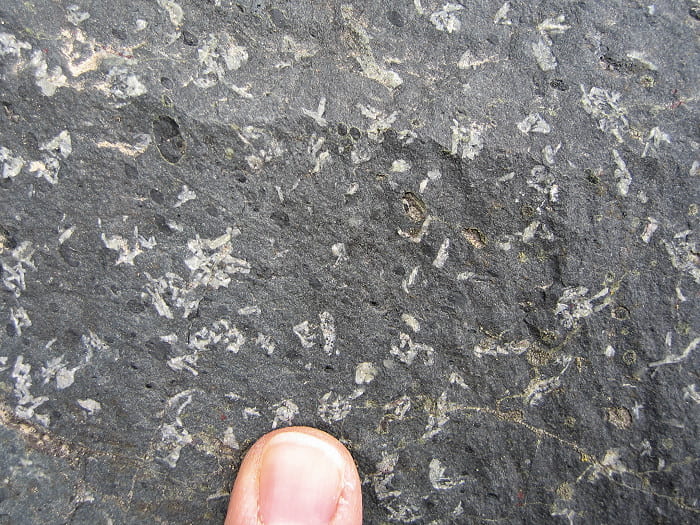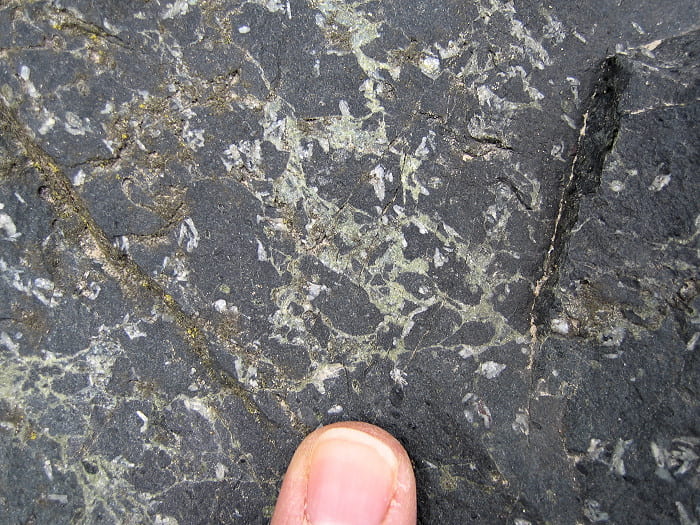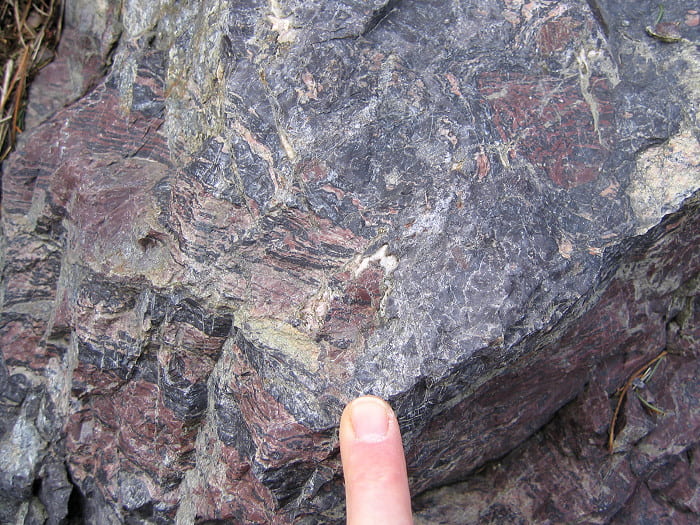Stop 9: Newbury Volcanics
The Newbury Volcanics compositionally range from basaltic andesites to rhyolites, and have almost entirely escaped metamorphism. They occur in a fault-bounded block between the Avalon and Nashoba Terranes. The rocks are late Silurian–Early Devonian, and include flows, pyroclastics, and interlayered sediments, some of which are fossiliferous. It is uncertain what regional terranes these rocks are related to, but their age is apparently similar to volcanics in the coastal volcanic belt of Maine.
Stop 9A

Andesite flow at Stop 9A. this rock contains plagioclase phenocrysts and vesicles that have been filled with a black mineral. After years of weathering the black material is removed, revealing the shape of the original vesicles.

Here, several gas vesicles can be seen that are filled with the black material, mentioned above.

Although these rocks are nearly unmetamorphosed, the whole sequence is overturned. Local deformation has resulted in fracture networks that are filled with pale green material.
Stop 9B

This rhyolite flow is at stop 9B, very close to 9A. The rock appears to no longer contain glass, though this was probably originally an obsidian flow. The chunks that you can see here probably represent part of the fragmental flow top, or an infolded or overrun fragmental surface.

This fragmental texture has larger broken blocks of reddish layered rhyolite, as well as smaller pieces.

This surface shows internal folding of rhyolite layers that formed during movement of the original lava flow.

More folds that formed during flow of the lava. These are definitely not tectonic folds.
